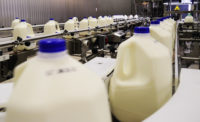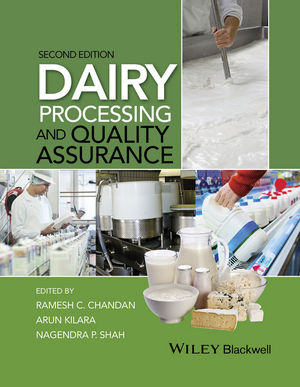How to shrink dairy shrinkage
The topic is especially important for Grade A milk plants under the Federal Milk Market Order.

Photo courtesy of StockPlanets via gettyimages.com

OK, I admit it. I am a terrible golfer. I start out with a couple of sleeves of balls, but by the time I have finished, I have one left. And I have no idea where the other balls are. I just cannot seem to keep track of where the ball went after I tee off.
Sometimes we have the same problems with milk in the dairy plant. We know what we started with, but by the end of the day, week, or month, we have considerably less than what we started with. We have no idea where the missing product went. We call that product loss or “shrink.”
One of the most practical means of improving profits is to control and reduce shrink/loss. Shrinkage can impact the bottom line issue in any dairy plant, fluid, cultured, powder, butter, or cheese plant.
Those butterfat and product losses can be categorized into five areas of potential loss in the dairy plant:
- Raw receiving and storage.
- Processing.
- Bottling or packaging.
- Refrigerated or frozen storage.
- Distribution.
And although controlling shrink is important for all dairy plants, it becomes even more critical for those Grade A milk plants that are under the Federal Milk Market Order (FMMO). Under the FMMO, an accurate accounting of all milk received and how it is processed and sold is required. Losses are classified as “accountable” or “unaccountable.”
Accountable losses are those that the cause may be identified and the loss is measured. Accountable losses include documented spills, returns, FMMO-approved dumps, and variations from the standards. Unaccountable losses, on the other hand, are ones that cannot be identified, and how the loss occurred is not known.
These losses of product and butterfat appear on the Market Report as pounds of product and butterfat shrink. Unaccounted losses often occur in areas where there are inadequate controls or inaccurate measurements. The mantra here is, “If you don’t measure it, you won’t control it.”
A sound loss preventive program is one that is reviewed every day. Many plants take the five aforementioned areas and break their program into those five steps in the operation. A goal of less than 0.25% loss in each step of the operation should be achievable in an efficiently operated
fluid milk plan. If the loss at each step is less than 0.25%, the total for the operation would be
5 times 0.25%, or 1.25%, which should be an achievable goal.
To achieve this goal, plant losses must be calculated daily, and the information used to create the loss report must be accurate. Losses over the goals can then be identified in a timely manner.
If the losses exceed the target goal, it’s time to investigate and correct. Areas to examine include:
- Are samples taken for butterfat testing accurate?
- Are accurate butterfat testing procedures being followed?
- Are meters and/or scales used calibrated for accuracy?
- Are there any leaks of product in the plant?
- Are production records and plant inventories accurate?
- Are there any trends of shrink on a day-to-day basis?
- Are milk receipts accurate and verified by accurate meters and/or scales?
- How is product pushed from tanks? Is there remaining product in the tanks?
- Are HTST (high temperature short time) changeovers monitored to determine if there are any losses?
- Is container filling accurate? Are accurate scales used to verify fill?
- Are jugs properly sized?
- Are loadouts accurate and are the bill of ladings correct?
- Is storage properly secured?
- Are any returns properly accounted for prior to dumping?
This list comprises a partial list of potential problem areas. Perhaps there’s more. Regardless, while controlling shrink is difficult, it can provide significant financial benefits and should be a key performance indicator (KPI) in every plant. Preventing shrinkage requires daily diligence. Remember, “If you don’t measure it, you won’t control it.”
Looking for a reprint of this article?
From high-res PDFs to custom plaques, order your copy today!







